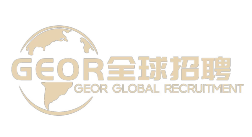A Guide to International Talent Introduction for Enterprises: A Practical Strategy for Efficient Recruitment of Foreign Employees
Guide to International Talent Introduction for Enterprises: Practical Strategies for Efficient Recruitment of Foreign Employees
In the context of globalization, the introduction of foreign employees has become an important means to enhance international competitiveness. Whether they are technical experts, management talents or cultural integrators, the participation of foreign employees can bring new perspectives and innovative capabilities to enterprises. However, the recruitment of foreign employees involves legal compliance, cultural differences, language communication and other challenges. This article will provide a set of landing solutions for enterprises from process design to detail execution.
1. identify recruitment needs and job suitability
1. precise positioning of job requirements
the role of foreign employees should be clearly defined before recruitment: is it to fill the technical gap, promote the internationalization strategy, or promote cross-cultural team cooperation? For example, technology companies may need algorithm engineers who are familiar with the international market, while foreign trade companies value business development talents with multilingual ability. The job description should highlight the international attribute, and clarify the core skills and responsibilities.
2. Assess cultural suitability
The working habits and communication methods of foreign employees are different from those of local employees. Enterprises need to analyze in advance whether positions require frequent cross-cultural collaboration and whether they need to adapt to the fast-paced decision-making process. For example, German employees focus on process specifications, while Latin American employees may be more inclined to communicate flexibly. These differences need to be assessed through behavioral interviews during the recruitment process.
2. to build a compliant recruitment process
1. Sorting out the legal framework
Different countries have strict regulations on the work permit, visa type and residence period of foreign employees. Enterprises need to know the immigration policies of the target countries in advance, for example:
- work visa type : distinguish technical immigrants, internal transfers, special talents and other categories;
- employer qualification requirements : some countries require enterprises to register capital, tax records or industry qualifications;
- Quota Restrictions : For example, Singapore has an upper limit on the proportion of foreign employees in some industries.
It is recommended that companies work with professional immigration lawyers to ensure that the process is legal and compliant.
2. Diversified recruitment channels
- international recruitment platform :LinkedIn, Indeed and other platforms can accurately reach global talents;
- industry summit and exhibition : participate in international technology forums or trade fairs and directly connect with target groups;
- university cooperation : establish internship or school recruitment cooperation with overseas top universities to lock potential talents in advance;
- Employee recommend : Encourage internal employees to recommend candidates who meet cultural values and reduce the risk of adaptation.
3. optimization interview and evaluation
1. Cross-cultural interview skills
- language proficiency test : in addition to English, evaluate the level of small languages according to business needs;
- scenario simulation questions : design cross-cultural conflict scenarios and examine candidates' adaptability and communication skills;
- cultural sensitivity assessment : judge its tolerance to multiculturalism through case analysis.
For example, you can ask: "How to coordinate the differences between the Chinese team and the German headquarters on the project deadline?"
2. Background check and reference check
Focus on verifying the candidate's international work experience, visa record and former employer evaluation. For senior management positions, it is recommended to entrust a third-party organization to conduct in-depth due diligence to avoid information bias caused by cultural differences.
4. integration and retention policies after employment
1. customized induction training
- acculturation course : introduce corporate values, communication style and decision-making process;
- language support : provide basic Chinese courses or translation services to reduce daily communication barriers;
- mentor system : provide senior local employees as mentors for foreign employees to accelerate their integration into the team.
2. Long-term retention mechanism
- career development path : design clear promotion channels to avoid promotion bottlenecks caused by cultural differences;
- welfare differentiation design : provide additional support in housing subsidies, children's education, family leave and other aspects;
- cultural integration activities : organize cross-cultural communication activities regularly to enhance team cohesion.
For example, a multinational enterprise has effectively enhanced the sense of belonging by setting up "International Culture Day" to let foreign employees share local festival customs.
5. Case Reference and Risk Avoidance
Successful Practice : An Internet company, in cooperation with the German Association of Engineers, targeted recruitment of foreign experts with intelligent manufacturing experience, while providing work permit assistance to their spouses, ultimately achieving a 30% increase in the internationalization rate of the technical team.
Common Mistakes :
- Ignoring the Risk of Visa Renewal: Failure to Plan Long-term Residence Path in Advance, Resulting in the Loss of Key Talents;
- Improper Handling of Cultural Conflicts: mistaking the direct communication style of foreign employees as "disrespectful";
- Opaque compensation system: the impact of exchange rate fluctuations and tax differences on actual income is not clear.
Conclusion
Recruiting foreign employees is a key step in the global layout of an enterprise, but it needs to be based on compliance, cultural integration and long-term value. Through systematic process design and refined operation management, enterprises can not only attract international talents, but also transform them into lasting driving force for business growth.
